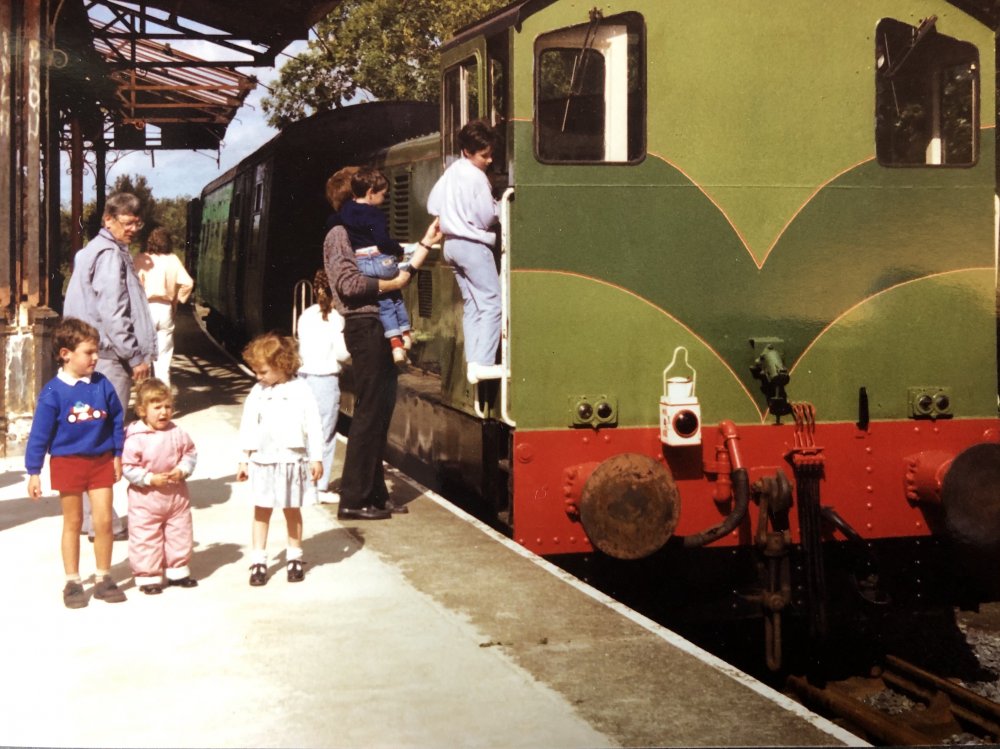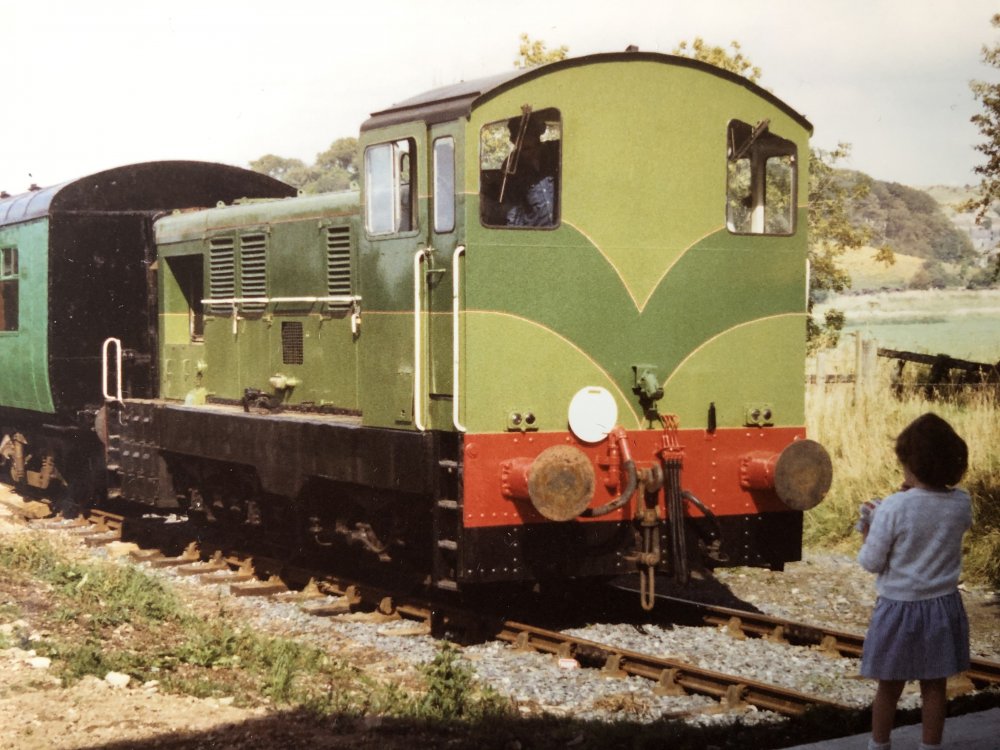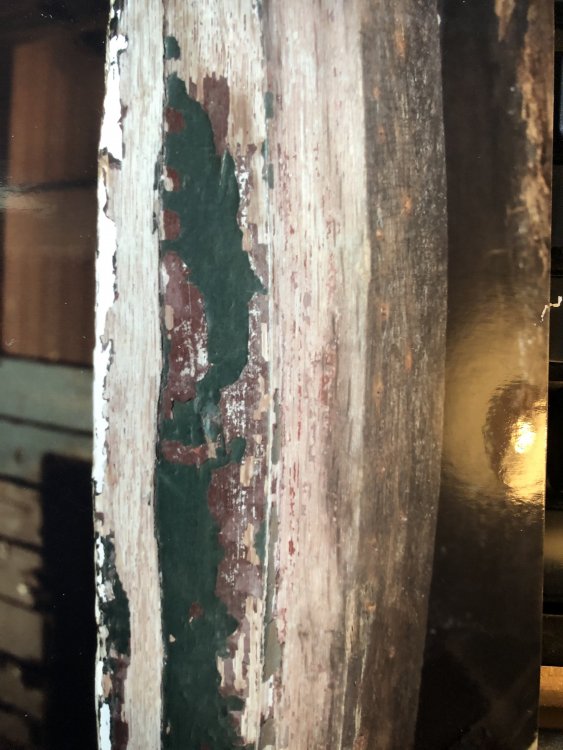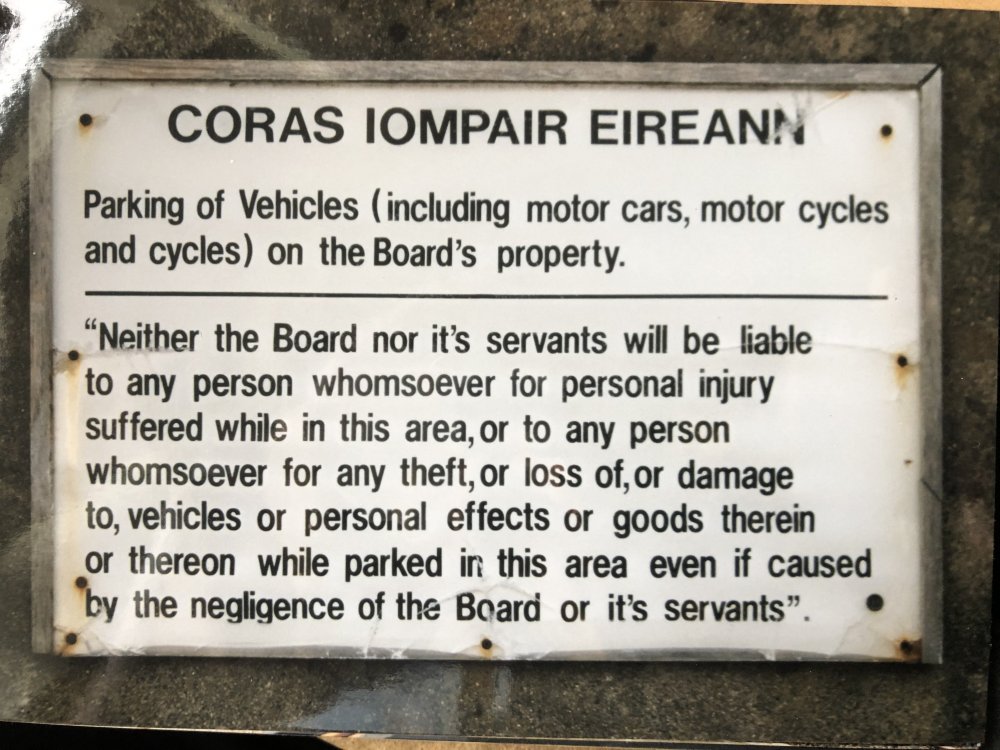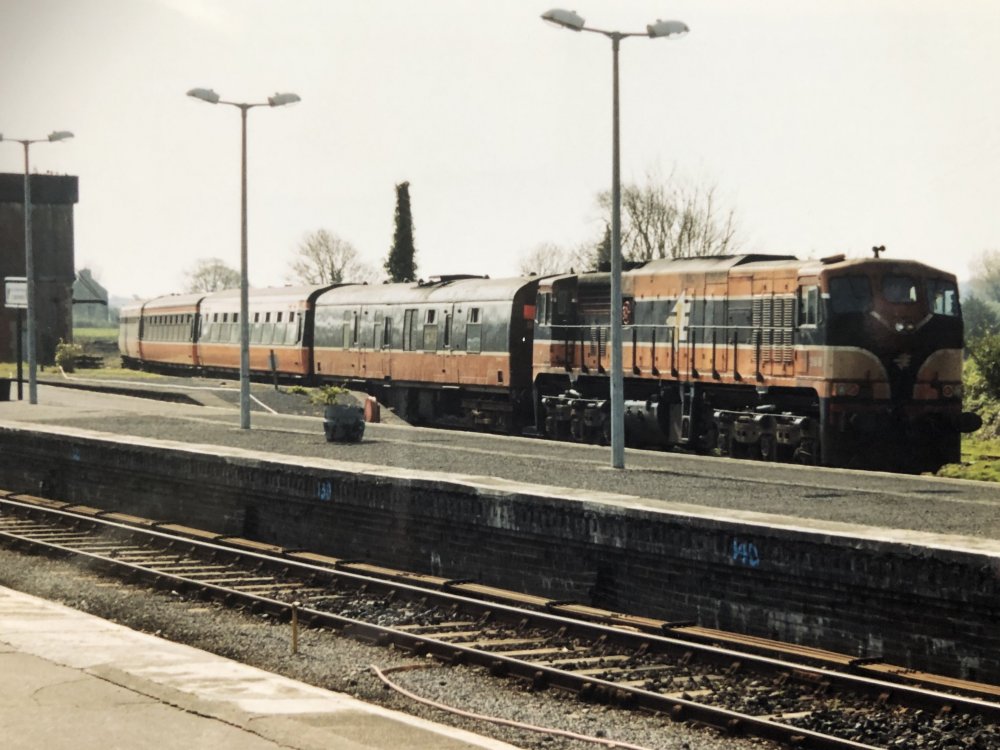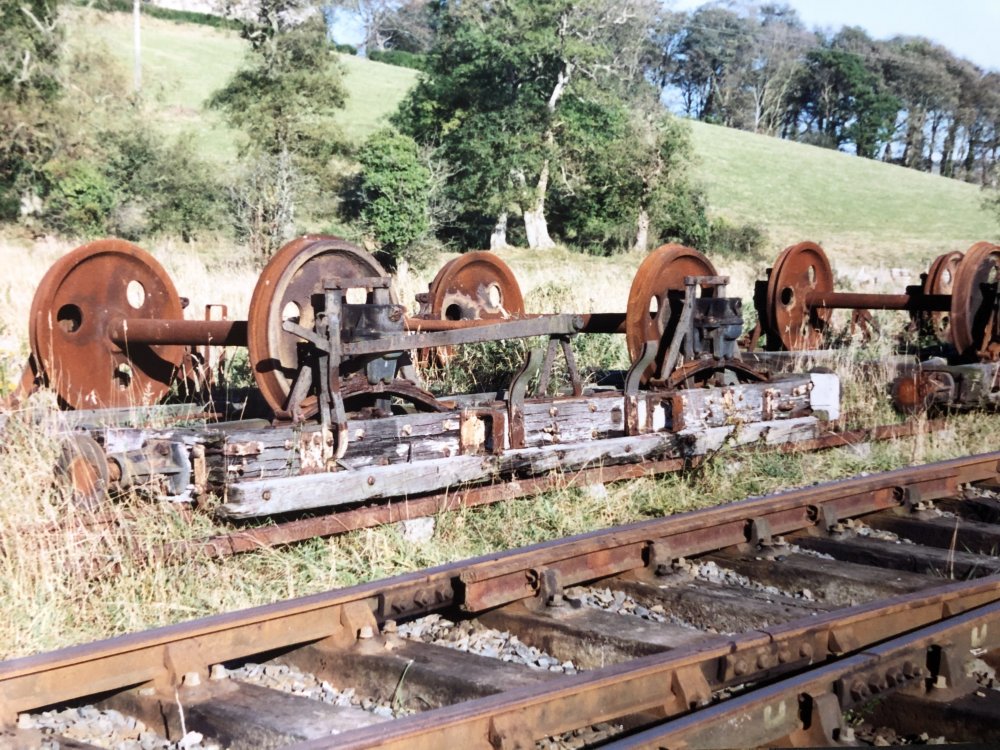-
Posts
15,833 -
Joined
-
Last visited
-
Days Won
393
Content Type
Profiles
Forums
Events
Gallery
Blogs
Store
Community Map
Everything posted by jhb171achill
-
Nicely done!
-
Now that engine is a puzzle. The train is mostly six-wheelers, and elderly ones at that, but the third vehicle is a bogie third in the then-main-line brown & cream livery; this will be a Dún Laoghaire Pier boat train. But the ENGINE! Looks like some sort of saddle tank - I have absolutely no clue what that might be. Any suggestions, folks? So, Broadstone might have been Dublin "Clarke". What about Harcourt Street? And if Broadstone would have become "Clarke", what of Dundalk? I'll get my coat first, and open the door, before shouting "Adams" and running away quickly.....................................!
-
Not all were rebuilt. Many J15s ended their days almost in original condition. There was never a single programme to do the whole lot in sequence. There wasn't the money - ever - to do 111 locomotives all the same. Thus, they tended to rebuild a few at a time, or one-offs. In jhbSenior's time in Inchicore, various experiments would occasionally be carried out on a locomotive in for repair, to see if performance or fuel efficiency could be enhanced. Therefore, like most large and / or long-lived loco classes, by the time the last few were withdrawn, hardly two were identical in every single respect. 184 wasn't the only one that lasted until the end of steam in essentially original (or early) condition, whereas 186 had been very substantially rebuilt. New wheels, new cab, new smokebox(es?), new firebox(es?), numerous tenders..... Trigger's Brush!
-
Many thanks for that, Ironroad, much appreciated. Regarding liveries, they were indeed painted that way. These engines were among what were classed as express passenger or suburban engines; they hauled main line passenger and goods. A now-deceased driver I knew told of having one with an extremely heavy cattle train out of Ballinasloe one time. He was pleased to have it, as apparently this service would normally have an 0.6.0 of some sort, doubtless the famous midland "cattle engine"! Anyway, obviously they were plain grey from the outset/ The very first was finished in Broadstone and fully painted in the then current Midland livery, lined black. But this was for photographs (anyone got a copy?) and before it was ever even steamed, it was repainted plain grey. So they all started grey. From 1945 onwards, they repainted these engines in the lined green you have, and very attractive it must have looked, but only as they went in for a major overhaul. So it is likely that at least one or two started the 1950s still in grey. It is probable that all became green by, let us say, maybe 1952-ish. Unfortunately, apart from the 800 class, many green engines got so extremely filthy as the 1950s wore on, that they could have been painted lime green and tartan for all anyone could tell. One only, uniquely in the entire CIE steam fleet (I think it was 388, but I'd have to look it up) received a very attractive black lined in red only, and with a light green cabside number instead of the usual light yellow, and of course the normal light green "flying snail" on the tender. It was painted thus specifically for the Cork Rosslare "Express". This was short-lived, as this service was dieselised not long after. I don't know where this loco went after that, but it's reasonable to assume it wasn't repainted again. By 1956/7 few locomotives were being fully repainted. But in these final years, many that were became black. I am unaware of any "Woolwiches" were ever treated thus, so staying green in final steam days is playing safe. Within CIE loco classes, most ended their days with all remaining examples grey. I have two of these, both green. I intend to lightly weather one and (vandalistic that it will seem) heavily weather the other one within an inch of its life, to replicate a colour pic I saw of one some years ago. Livery-wise, the 400 class were also painted green, though at least two of these ended their days either in black or very heavily work-stained grey. Steam engines were dirty things. There's a photo in one of the books of a 400 at Inchicore. The tender is green, but so filthy you can't see the lining; I wonder was it an exception without any? But the engine has just got to be black. Things got mixed up. Tenders were routinely swopped. Maybe the engine IS green... but it LOOKS black. Think of the number of blue GNR engines on which the domes look black, maybe the boiler too; Ernie's photo of an S class at Adelaide posted the other day shows this. And look at pics of Donegal tanks - even some Donegal experts today will insist that they actually had black domes - they didn't. They just never cleaned the domes and boilers, but they did the tanks and cabsides... I saw this in India too in the 1970s. I digress; some here will be reaching for their smelling salts. But I hope that has answered your question. In self-isolation, one has to pass one's time as a tea-guzzling keyboard warrior of an evening......................... You're quite right - it's not its original tender. Most of them got new tenders as long ago as the 1915-20 period. For some years, many at Whitehead insisted that it was off a 400-class but it isn't one of those either. I wouldn't be surprised, though, if some 400 ended up with a tender of that type at some stage, and maybe it was last seen with a 400, but it's not one of that type. Inchicore tried to standardise on tenders and various tenders designs were intended for more than one class of loco. Thus, it is now impossible to tell what locomotive class or number this tender was originally paired with. The same, of course, is true, of the RPSI's ex-GNR engines.
-
.....and could very well have been swopped from time to time, like almost every single part of any steam engine. The RPSI's 184 and 186 have numerous bits with the numbers of other engine stamped on them. I believe 461 and 462 swopped boilers at one time - a variation within a class of but TWO locomotives! When I was in Indonesia in the late 70s / early 80s chasing the last of their steam, the loco livery included the loco number painted on both the tender and the cabside. I went to Madiun to see the legendary B50s, of which only about ten of the original sixty were still in traffic - nominally, at any rate; the daily traffic requirement was for two or at most three. So, B5006 had the tender of B5010, while the tender from long-scrapped B5001 was behind either B5012 or B5004, one or the other. Oher 4.4.0s and other tender engines were the same. C1101 had connecting rods stamped with the number of a different C11. It was the same here! talk about Trigger's Brush..... hardly a thing on 186 today, if indeed, literally ANYTHING at all, is original from 1879.
-
Thinking of getting GSR numberplates for one and painting it grey, in the hope of someday have a few GSR-liveried coaches to run behind it. Then I can cover 1945-55-65......1970 max! Beyond that it's brown wagons, diseasels and all that oul shtuff! Actually, who is it that does those GSW / GS / CIE numberplates?
-
I've a couple of those locos. I've never run them so I don't even know what state they're in. However, my question: are they easy to convert to DCC?
-
"Mac" had indeed a unique style of writing. I first met him in 1970, when i shared a compartment with him in a "North Atlantic Express" coach on a train to Derry. It was my first-ever RPSI trip, with 171. His books were if anything, more about the people than the trains - he knew many people on the railway, but had also gathered a HUGE repertoire of stories of railwaymen long gone, as is evident in the book Mayner mentions, and others. I got the impression that he took many of those stories with him; reproductions of some of them might have landed him in court! As far as isolation was concerned, there were indeed many remoter lines in Ireland. Much of the West Cork was even remoter, as were the long branches to Valencia Harbour, Achill and Clifden, and not forgetting the scenic wildnesses of the Barnesmore Gap, the Glenties line and the West Clare.... The Derry Central wasn't at all unlike the GNR Lisburn to Newcastle line in terms of the type of countryside and communities it served, or the Portadown to Omagh line. All good stuff, but sadly all gone.
-
At the loop platform? No, it's still there but had to have some restoration work done to it. The canopy at Downpatrick station is not original. It was originally attached to the goods shed at Maghera, Co Derry. The original BCDR station in the town was completely levelled in the 1970s. The canopy and platform at the Loop Platform junction station are the solitary original structures on the whole railway.
-
I have to say that I read several British papers, and American ones, daily, as well as our own. Generally it is simply to inform myself on the depths they reach in their one-sided bigotry. Among those i read is the Guardian, and I've seen several articles in it which really do bring home very well-researched home truths. This is but one.
-
A few more at Downpatrick (Loop Platform) in 1990. Don't start me on “E” class liveries! The two young ladies on the platform await their turn in the cab. The smaller would end up driving a “G” and O & K No. 3 during a short stint 16 years later..... Get ‘em young, indoctrinate ‘em young.....! The doorpost is off the ex-BCDR Golfers’ Saloon, and shows authentic UTA dark green and BCDR maroon paints.
-
A few photos to stave off cabin fever. The CIE notice may be of interest to some modellers for lineside scenery. I despair about the punctuation and grammatical skills of the writer! The Claremorris photos were taken in 1989. The wagon chassis at Downpatrick are, of course, Australian..... A nice MGWR footbridge at Claremorris, and the Ballina branch train.
-
From left to right, two Bredins (probably 1937 series), a Park Royal, another coach of either Bredin or early CIE (1950-2) design, and a wooden-bodied third of 1910-20 GSWR design. All in black'n'tan, so probably 1965/70-ish.
-
It's an Australian-issue one.
-
I can attest to what Leslie says. As a rookie RPSI Treasurer in the 1980s, I well recall getting some very nice donations in from a certain Mr. L McAllister of Camberley. Such donations were very very welcome indeed at a time when the RPSI's finances had to be nursed, over a three-year period, back from borderline bankrupt to what passes for solvency in any such heritage organisation.... so well done, "The Syndicate".
-
I had a package delivered today also, addressed to Daughter-the-middle. The UPS man also just flung it and ran...and I didn't even have a mask...... The dog doesn't give a toss. He's not taking it seriously at all. He sleeps in the corner right now....
-
Yes, your dad and myself between us counted the ha'pennies in the RPSI for almost fifty years! And both of us - your dad more so nowadays, are still involved in the odd bit of fund raising. In recent years, my own activities have been reduced to selling raffles and books on the May tour, but it's cancelled too.....! Strange times.
-
The DCDR has also had to close down completely for the duration. Easter trains on this line were always a major boost to pay for winter maintenance, track work, loco and coach maintenance and so on. Mayday trains also got the railway back onto an adequate financial footing before the main summer season - coal had to be bought, and so on. When I did the finances there, once I knew what the profit was from May and Easter, I could copper-fasten budgets for different aspects for the season until Christmas. The Santa results comprised almost half of the year's net income. This will place an extremely serious burden indeed on the DCDR, RPSI and all heritage railway operations this season. Malahide is also closed, at the worst possible time - its first year. I have just been speaking with a colleague in the tourism business, who tells me that CIE tours have cancelled everything. Colleagues in Co Kerry report absolute disaster. Let us hope those of us who can, may donate to some of the heritage volunteer groups, but that governments north and south will open their wallets wide.
-
All are currently cancelled, and Whitehead museum and tea shop are shut UFN.
-
The May Tour is cancelled. Unfortunate but unsurprising in the circumstances.
-
Shows how blind I am! There were several of our good folks I missed! Must go to specsavers!
-
It's about time I made a start on some provincially Leslie cattle trucks!
-
Nice little scene!
-
CSE engines - two survive at Downpatrick, though three almost did. But originally there were nine, built 1934/5. Three each at Tuam, Mallow & Thurles. To confuse, instead of numbering them 1-9, each factory had its own 1/3! So you had Thurles No. 1, Tuam No. 1, Mallow No. 1, and so on. I always thought a model of one would be nice, but what sort of chassis and motor to use? Downpatrick has Mallow’s No. 1 and Thurles No. 3 - or maybe it’s the other way round! Carlow had a strange vertical-boilered yoke and the very temperamental diesel now at Whitehead.
.png.c363cdf5c3fb7955cd92a55eb6dbbae0.png)




